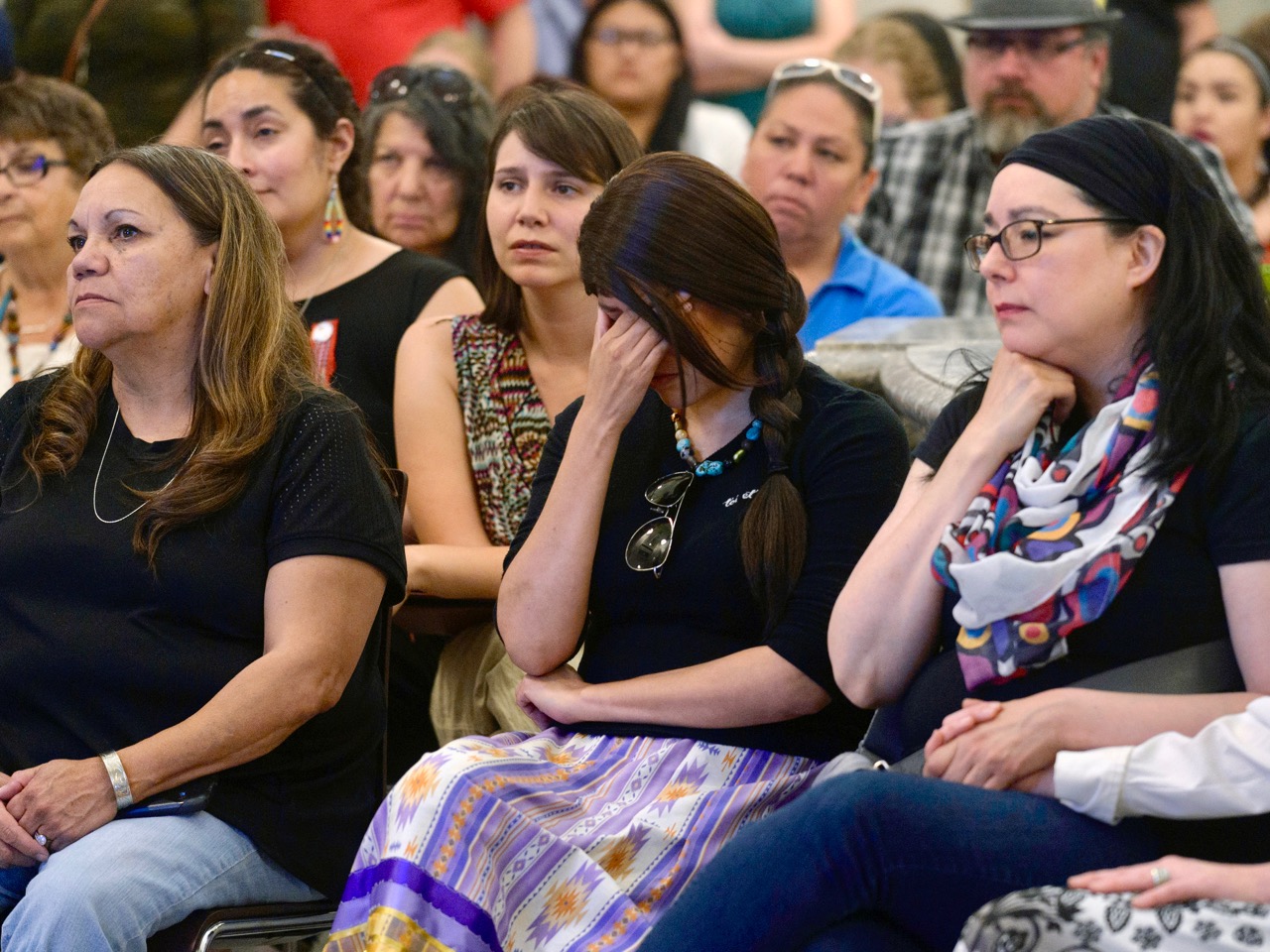Last fall, a group of Indigenous women in the Canadian province of Saskatchewan brought a class-action suit against the Saskatoon Health Authority. They also sued the provincial and federal governments and some medical professionals.
They asserted that some Indigenous women had been forcibly sterilized. Others had been tricked into giving consent for sterilization when they were under stress or heavily drugged. They claimed that doctors did this over several decades, up to the 2000s.
The UN Committee on Torture recommended in late 2018 that the Canadian government investigate all allegations of enforced sterilization and adopt legislation criminalizing it.
Indigenous activists want a new law specifically outlawing forced sterilization, but the federal government argues it’s already illegal.
Canada doesn’t have a good history with regard to forced sterilization. The provinces of Alberta and British Columbia forcibly sterilized people from the 1930s to the 1970s.
Authorities were responding to the eugenics movement, popular among many influential Canadians. Eugenicists wanted to keep the Canadian “race” pure by sterilizing “unfit” people. “Unfit” people were usually poor people, immigrants and people with disabilities. Indigenous people also were far more likely than others to be sterilized. As Angus McLaren shows in his 1990 book Our Own Master Race, during the last few years of forcible sterilization in Alberta, Indigenous and Metis people were 2.5 per cent of the population but 25 per cent of those sterilized.
Read more: Canada's shameful history of sterilizing Indigenous women

Forced sterilizations are an aspect of genocide. Most people think of genocide as the mass, deliberate murder of large numbers of people. But when the United Nations passed the Convention on the Prevention and Punishment of the Crime of Genocide in 1948, it defined five ways genocide could be committed.
Only one of the five means defined in the Genocide Convention is mass murder. The others are: “causing serious bodily or mental harm to members of the group;” “deliberately inflicting on the group conditions of life calculated to bring about its physical destruction in whole or in part;” “imposing measures intended to prevent births within the group;” and “forcibly transferring children of the group to another group.”
Forced sterilization prevents births.
The “Sixties Scoop” removed thousands of Indigenous children from their families and communities in the 1960s. The reason given was to protect the children from abusive situations, but this could be considered an example of forcibly transferring children from one group to another.
On Jan. 7, 2019, Premier Scott Moe of Saskatchewan apologized for the Sixties Scoop. Manitoba and Alberta had already apologized.
Forcible deportations are a way to deliberately inflict conditions calculated to bring about a group’s physical destruction. Canada deported several Indigenous groups in the Far North from their homelands to other locations.
Many died from starvation, exposure and disease. Any removal of Indigenous people anywhere in the country that resulted in a significant number of deaths might be considered genocide by deportation.
Read more: Canada's genocide: The case of the Ahiarmiut

The term genocide was originally coined in 1944 by a Polish Jewish lawyer, Raphael Lemkin.
Lemkin wanted to include what we now call cultural genocide in the definition. He wasn’t thinking about Indigenous peoples; he was thinking of the cultural genocide of ethnic groups in occupied Eastern Europe by the Nazis during the Second World War.
Lemkin thought malicious destruction of works of art and culture should be a crime called vandalism, and destruction of human collectivities should be a crime called barbarism.
Although Lemkin lobbied hard for the UN to adopt these crimes of vandalism and barbarism as infractions people could be prosecuted for; it did not.
If it had, we could argue that Canada’s system of residential schools was an aspect of genocide, the barbarism of destroying a collectivity. Indigenous children were removed from their communities and forbidden to speak their languages, or practice their customs and cultures.
We use the term cultural genocide as a descriptive term, but it isn’t part of the UN’s legal definition. Legally speaking, the UN definition requires proof of intent to commit genocide.
In other words, if Canadian authorities claim that the sterilizations of Indigenous women were the accumulation of a taken-for-granted culturally sanctioned practice of many doctors over many decades, then according to the law, Canada wasn’t committing genocide by preventing births.
Similarly, if there was no intent to destroy a community by forcibly transferring children, then the Sixties Scoop wasn’t genocide.
And if there was no intent to deliberately inflict conditions of life calculated to bring about peoples’ physical destruction by deporting Indigenous peoples, then Canada wasn’t committing genocide.
But if we add up all the ways that Canadian governments have oppressed Indigenous peoples over the centuries, then those governments bear a weighty burden. They still must remedy the effects of practices that in effect, if not in intent, constituted genocide.![]()
Rhoda E. Howard-Hassmann is Professor Emeritus in the Department of Political Science at Wilfrid Laurier University.
This article is republished from The Conversation under a Creative Commons license. Read the original article.

